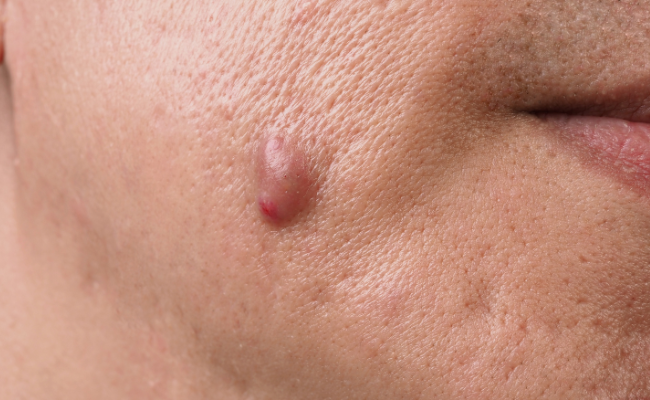How to Treat Actinomycosis?
- October 07, 2023
- No Comments

What is Actinomycosis?
Actinomycosis, an uncommon bacterial infection, is induced by various Actinomyces genus species. Although these bacteria normally inhabit the mouth, throat, and digestive tract, they can incite infection upon penetrating deeper tissues. While actinomycosis predominantly emerges in the face and neck, it can impact other bodily regions. Dental issues or surgeries commonly contribute to its occurrence, but abdominal surgeries, aspiration, and intrauterine device (IUD) use can also be triggers.
Why Does Actinomycosis Occur?
Actinomycosis occurs when the bacteria from the Actinomyces species invade the surrounding tissues, leading to the formation of abscesses, draining sinuses, and tissue inflammation. The infection is usually opportunistic, taking advantage of weakened immune defenses or breaks in the mucous membranes.
How Does Actinomycosis Manifest?
The manifestations of actinomycosis can vary depending on the affected area. Common sites of infection include the jaw, lungs, abdomen, and pelvis. Symptoms may include:
- Abscess Formation: Actinomycosis often presents as painful abscesses, which may contain pus and have a characteristic appearance known as "sulfur granules."
- Tissue Inflammation: Infection leads to inflammation in affected tissues, causing swelling and discomfort.
- Draining Sinuses: Pus-filled channels known as sinuses may develop, connecting the abscesses to the skin surface.
- Fistulas: In some cases, fistulas may form, connecting the infected area to nearby organs or surfaces.
Treatment Solutions for Actinomycosis
Antibiotic Therapy:
- High-dose Penicillin: Penicillin is the first-line treatment for actinomycosis. High doses are often required for an extended duration to effectively eliminate the bacteria.
- Alternative Antibiotics: In cases of penicillin allergy, alternative antibiotics such as tetracycline or erythromycin may be prescribed.
Surgical Intervention:
- Drainage of Abscesses: In cases where abscesses are large or persistent, surgical drainage may be necessary to remove infected material.
- Resection of Infected Tissues: In severe cases, surgical removal of infected tissues may be required, especially if there is involvement of vital structures.
Supportive Care:
- Pain Management: Pain relief measures may be employed to alleviate discomfort associated with the infection.
- Nutritional Support: Adequate nutrition is essential for overall health and can support the body's immune response.
Long-Term Follow-up:
- Continued Antibiotic Therapy: Prolonged antibiotic courses are often necessary, and regular follow-up is crucial to monitor progress and adjust treatment as needed.
- Immunization: Ensuring up-to-date immunizations can help prevent respiratory infections that may predispose individuals to actinomycosis.
Benefit Points of Actinomycosis Treatment
- Resolution of Infection: Effective treatment leads to the resolution of actinomycosis, eliminating abscesses, sinuses, and inflammation.
- Prevention of Complications: Timely and appropriate treatment helps prevent the spread of infection to adjacent structures and reduces the risk of complications such as tissue damage.
- Pain Relief: Treatment measures, including surgical drainage and pain management, contribute to relief from pain and discomfort associated with actinomycosis.
- Preservation of Function: Surgical interventions aim to preserve the function of affected organs or structures, minimizing the impact of the infection on overall health.
- Reduced Risk of Recurrence: Long-term antibiotic therapy and follow-up care contribute to a reduced risk of recurrence, ensuring sustained recovery.
Comments (0)